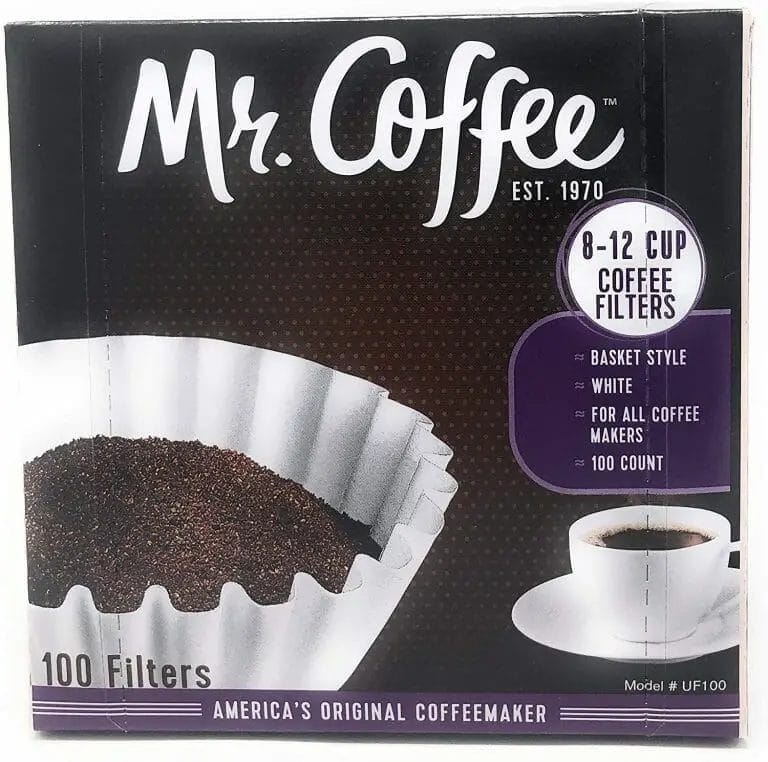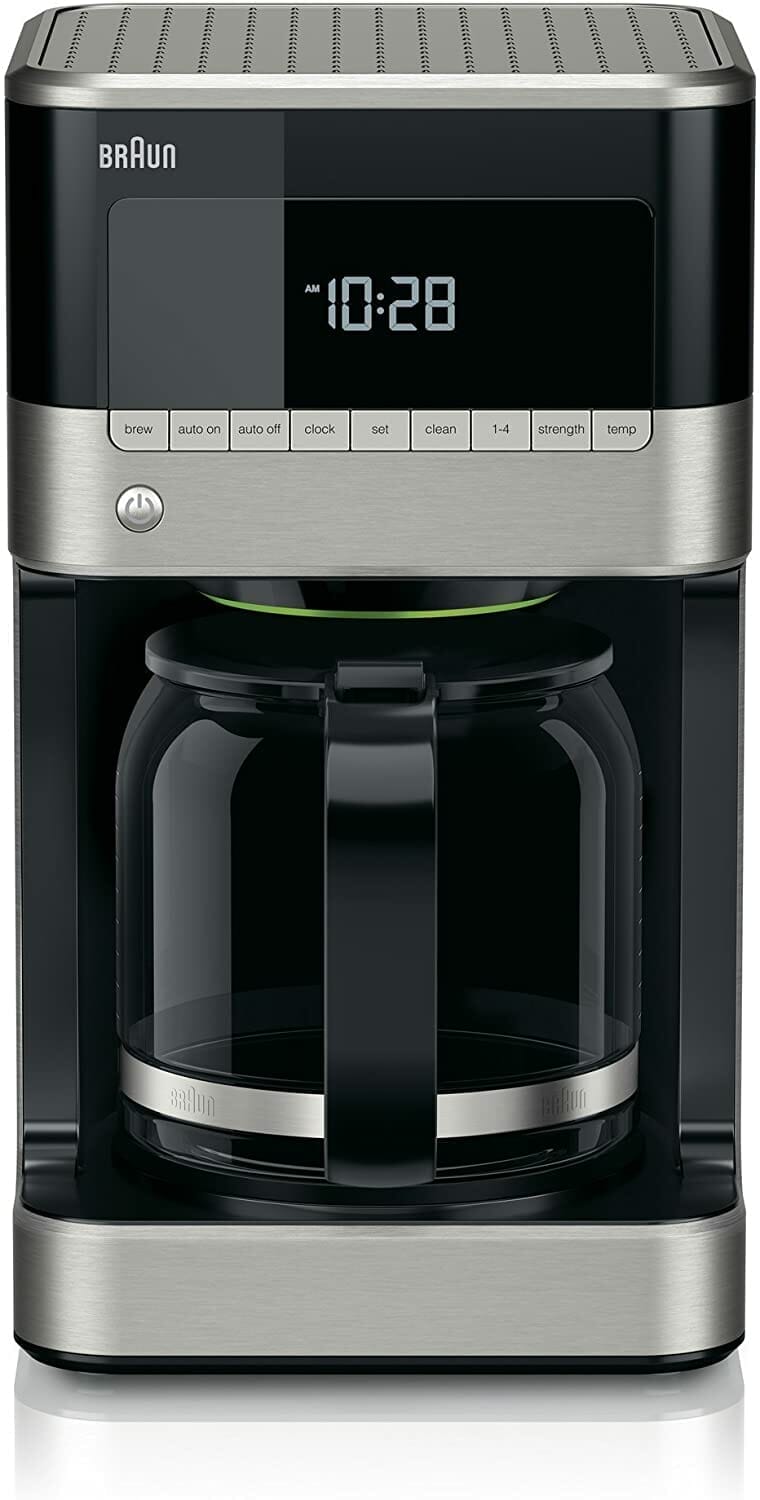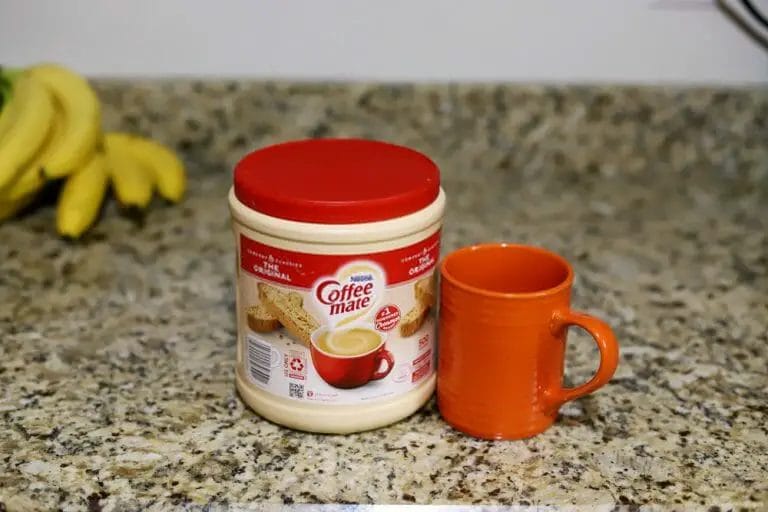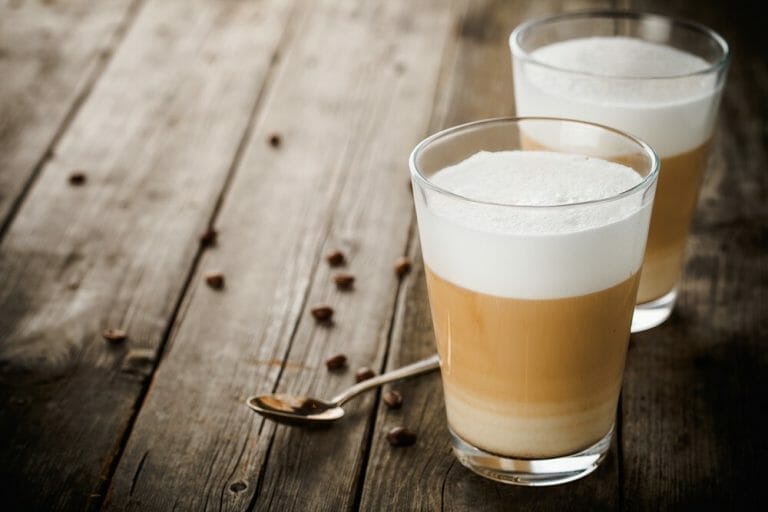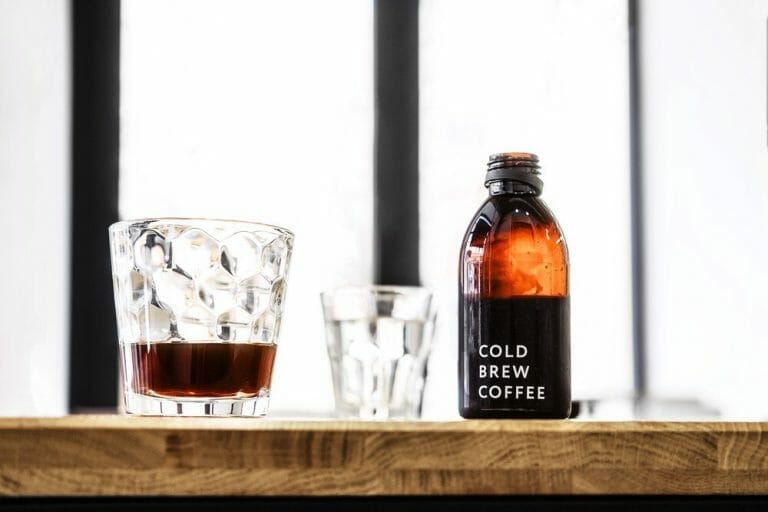How To Make Coffee Without a Coffeemaker

Key Takeways
- Ditch the Coffeemaker: Explore alternative brewing techniques for a unique coffee experience.
- Bean Selection: Understand flavor profiles and choose beans that pair best with your preferred brewing method.
- No Grinder? No Problem: Use a mortar and pestle or rolling pin to grind the beans, or try coffee sock brewing.
- Cowboy Coffee: Brew bold, rich coffee right on your stovetop with this classic technique.
- Turkish Coffee: Indulge in the intensely aromatic taste of authentic Turkish Coffee brewed in a cezve.
- Coffee Bag Brews: Convenient, portable, and delicious – enjoy barista-quality coffee anywhere with coffee bags.
- Pour-Over Perfection: Master the pour-over method for a hand-crafted, nuanced cup of coffee.
- Water Quality and Temperature: Aim for optimal brewing temperature and consider water chemistry for the best taste.
- Taste Test: Compare coffeemaker versus non-coffeemaker brews for a new appreciation of coffee flavors.
Uncover the Art of Making Coffee Without a Coffeemaker
Don’t have a coffeemaker? No problem – let’s explore the art of making coffee without one!
There are plenty of alternatives to traditional drip coffee makers, and each method offers unique benefits that you won’t find with a machine.
By adapting to different brewing techniques, you’ll uncover new flavors and textures that can take your morning cup of joe to the next level.
The benefits of going coffeemaker-free are numerous. For starters, you’ll save counter space and money on electricity bills.
Plus, many alternative methods use less water than a traditional coffeemaker, so you’ll be doing your part for the environment too.
But perhaps the biggest advantage is the opportunity to experiment with different brewing techniques.
From French press to pour-over, each method requires its own set of skills and allows for customization based on personal taste preferences.
So why not try something new and see where it takes you?
Selecting the Perfect Beans for Your Coffeemaker-Free Brewing Adventure
When selecting the perfect beans for your brewing adventure, you’ll want to consider their flavor profiles and which brewing techniques they pair best with.
There are numerous coffee bean types available in the market, each with unique characteristics that can enhance or diminish your coffee experience. Some popular options include Arabica, Robusta, Liberica, and Excelsa.
Arabica is known for its delicate flavors and low acidity levels, making it suitable for light roasts and pour-over brewing methods.
On the other hand, Robusta is a hardier variety with higher caffeine content and bold flavors that work well for espresso shots.
Apart from the type of bean used, the roast level also plays a significant role in determining taste.
Light roasts bring out fruity notes while dark roasts offer intense smoky flavors. Medium roasts provide a balanced taste between these two extremes.
For example, if you’re using a French press method for brewing coffee without a coffeemaker, medium to dark roasted beans are recommended as they can withstand prolonged contact with hot water without becoming too bitter or stale-tasting.
In summary, understanding flavor profiles and pairing them up with appropriate brewing techniques will help you make better-informed decisions when selecting beans for your coffeemaker-free journey.
No Grinder? Discover Ways to Prepare Your Beans Without a Grinder
To prepare your beans without a grinder, you’ll need to get creative and explore alternative methods that can bring out the best in your coffee.
Here are some ways to prepare your beans manually:
- Mortar and Pestle: Using a mortar and pestle is an effective way to grind coffee beans manually. Simply place the beans in the mortar, and use the pestle to crush them into smaller pieces until they reach your desired consistency.
- Rolling Pin: Another manual method involves using a rolling pin to flatten and break down the coffee beans. Place them on a flat surface, cover them with a towel, and roll over them several times until they are ground to your liking.
- Coffee Sock Brewing: If grinding by hand isn’t for you, try using a coffee sock! This simple brewing device consists of a cloth filter that’s filled with ground coffee before being steeped in hot water. The result is rich-tasting coffee that’s similar to what you’d get from using a traditional drip coffeemaker.
With these alternative methods at hand, you don’t have to sacrifice good quality coffee just because you don’t have access to a grinder.
Give these techniques a try and see which one works best for you!
The Cowboy Coffee Way: Your Quick Guide to an Old Favorite
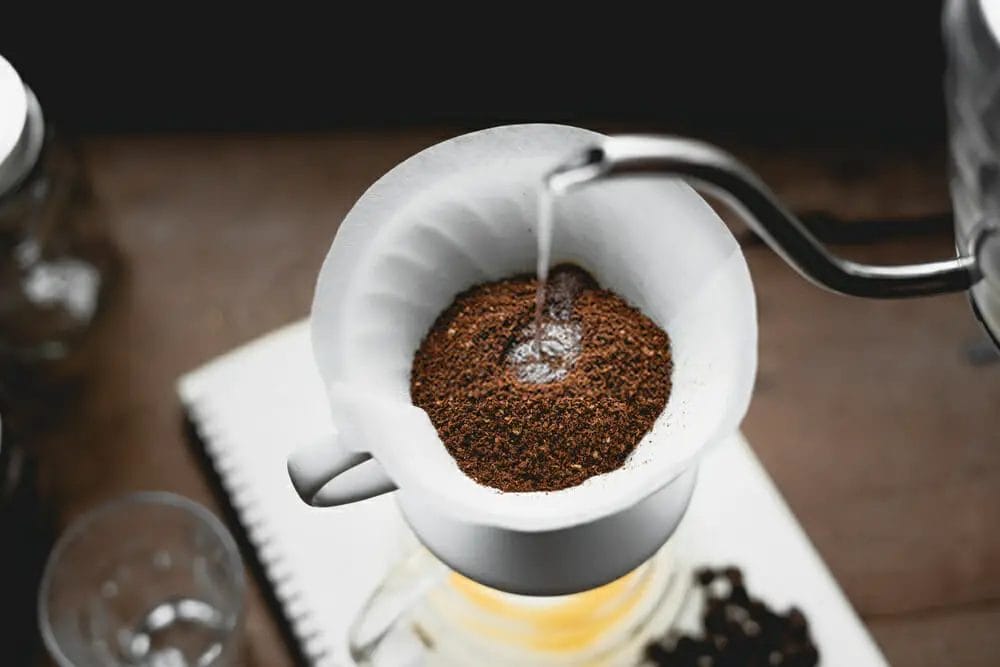
Get ready to experience the rich and bold flavor of Cowboy Coffee, brewed the old-fashioned way right on your stovetop!
This method is perfect for those who don’t have access to a coffee maker or grinder.
All you need are some basic kitchen tools, water, and high-quality coffee beans.
When it comes to choosing the best coffee beans for cowboy coffee, look for a blend that is strong and full-bodied with notes of chocolate or caramel.
If you don’t have access to a grinder, consider purchasing pre-ground beans or using alternatives like a rolling pin or mortar and pestle to crush them.
Once you have your ground coffee ready, mastering the cowboy coffee brewing technique is simple: just bring water to a boil in a pot over medium-high heat, add your desired amount of ground coffee directly into the pot (usually 2 tablespoons per cup), let it simmer for 2-3 minutes until it sinks to the bottom, then remove from heat and let it sit for an additional 1-2 minutes before pouring into your favorite mug.
With this easy process, you’ll be savoring every sip of deliciously bold Cowboy Coffee in no time!
Crafting Authentic Turkish Coffee: A Coffeemaker-Free Experience
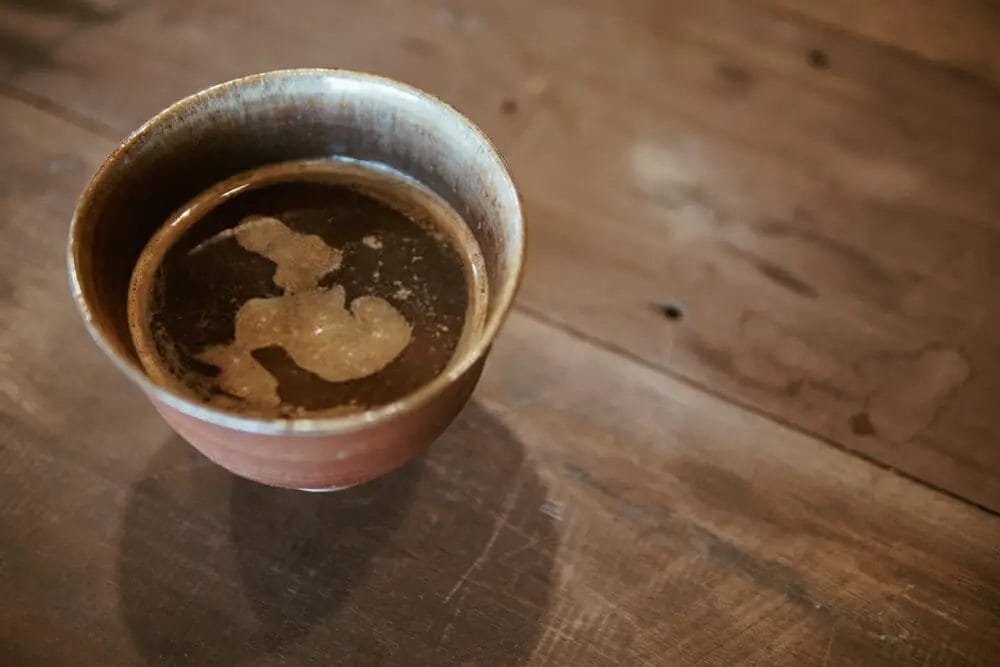
Indulge in the rich and aromatic taste of authentic Turkish Coffee, brewed to perfection without the need for a traditional coffeemaker.
This brewing technique has been practiced for centuries and is an integral part of traditional coffee rituals in Turkey and other parts of the Middle East.
To make authentic Turkish Coffee, start by selecting high-quality Arabica beans and grinding them into a fine powder.
Then, add water, sugar (if desired), and your coffee grounds to a cezve (a small copper or brass pot).
Heat the mixture over low heat until it begins to foam. Remove from heat before it boils over and then return it to the heat source two more times until fully heated.
Allow the coffee to settle before pouring into small cups.
There are also regional variations in this method that can be learned through practice; however, each variation still maintains the essence of this traditional brewing technique.
The Convenience of Coffee Bag Brews: Brew it Like a Barista
You can easily achieve the taste and quality of a barista-made coffee with the convenience and portability of Coffee Bag Brews.
This unique brewing method allows you to enjoy your favorite brew anytime, anywhere, without the need for any special equipment or training.
Here are some tips to help you make the most out of your coffee bag experience:
- Choose your coffee bag options wisely. Make sure to select high-quality beans that suit your taste preference. There are a wide variety of blends available, from light roasts to dark roasts, so experiment until you find what works best for you.
- Pay attention to water temperature and brewing time. To get that perfect cup, use hot (but not boiling) water and let it sit with the coffee bag for at least three minutes. Don’t rush this process as it may result in an under-extracted cup.
- Follow barista tips when serving. Remember, presentation is key! Pour your brewed coffee into a nice mug or cup and add milk or cream if desired. A sprinkle of cinnamon or cocoa powder on top will also give it that extra kick.
With these simple steps, you can become a master barista in no time! Whether you’re camping in the great outdoors or just stuck at home without access to fancy equipment, Coffee Bag Brews offers an easy solution that doesn’t compromise on quality or flavor.
Perfecting Your Pour-Over Coffee: A Simple Guide
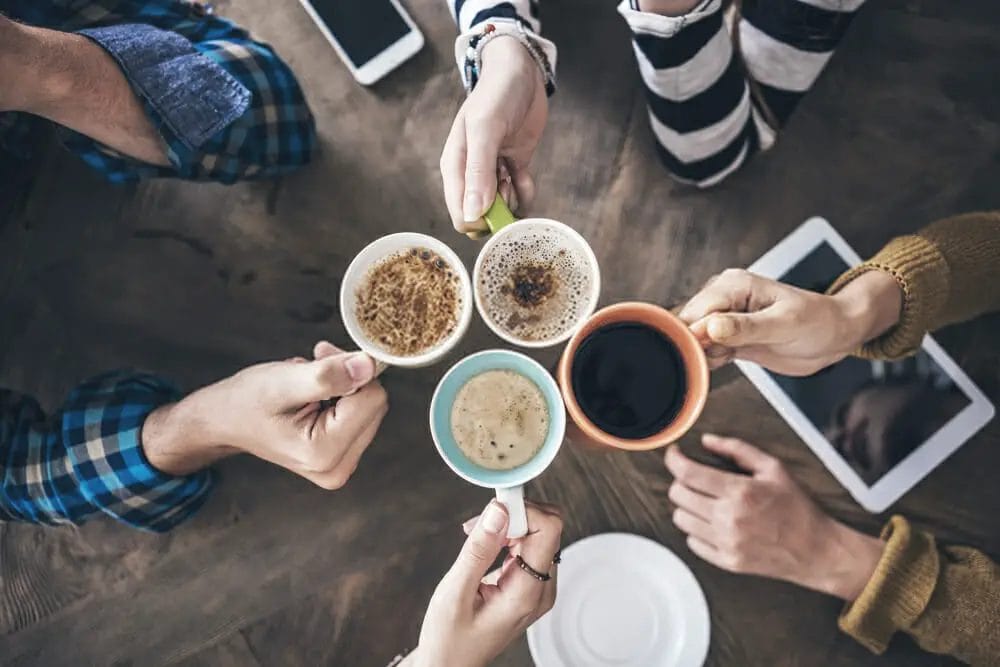
Immerse yourself in the art of making a perfect pour-over coffee using just your hands to create a nuanced and flavorful experience.
To start, you’ll need to gather some tools: a kettle, filter paper, ground coffee beans, and a mug.
Begin by boiling water in your kettle. While waiting for it to come to a boil, prepare the filter paper by folding it along its seams and placing it inside the dripper over your mug.
Next, add the coffee grounds into the filter paper. The amount of coffee will depend on personal preference as well as the size of your cup. A good rule of thumb is one tablespoon per six ounces of water.
Once your water has boiled, let it sit for about 30 seconds before starting to pour over the coffee grounds slowly and steadily using circular motions.
Pour enough hot water to wet all the grounds evenly, then pause for 30 seconds to allow them to ‘bloom.’
After this time has passed, you can continue pouring hot water slowly until you reach your desired amount or until all the water has been used up.
With these simple pour-over techniques, combined with high-quality coffee bean varieties and proper water quality (filtered or bottled), you’ll be able to enjoy an exceptional cup every time!
The Science Behind Your Brew: The Role of Water Quality and Temperature
Congratulations on mastering the art of pour-over coffee! Now, let’s delve into the science behind your brew and understand how water quality and temperature can drastically affect the taste.
Firstly, let’s talk about water chemistry. Water is a crucial ingredient in making coffee as it makes up 98% of your cup.
The mineral content of water can impact the flavor profile of your coffee. For example, hard water with high levels of calcium and magnesium can result in a bitter or chalky taste.
On the other hand, soft water with low mineral content can lead to a flat or dull taste.
Therefore, it’s essential to consider the type of water you use when brewing your coffee for optimal flavor.
Secondly, brewing temperature plays a vital role in extracting the flavors from your beans correctly.
When boiling water is poured over ground coffee beans, chemical reactions occur that extract desirable compounds such as caffeine and flavor oils from them.
However, if the temperature is too hot or too cold, it can affect this process and result in an under-extracted or over-extracted cup of coffee.
As a general rule of thumb, aim for a brewing temperature between 195-205°F (90-96°C) to achieve optimal extraction without burning your beans.
To sum up:
- Water chemistry impacts the overall flavor profile.
- Brewing temperature affects how well flavors are extracted.
- Optimal brewing temperature range is between 195-205°F (90-96°C).
- Use these factors to achieve an ideal cup of coffee through proper extraction techniques using various methods available at home like French press or drip machines to get that perfect brew every time!
Essential Tips for Brewing Exceptional Coffee Without a Coffeemaker
Now, let’s explore some must-know tips for crafting outstanding coffee without relying on a traditional coffeemaker.
First, consider using grind alternatives to achieve the perfect consistency for your coffee.
If you don’t have access to a grinder, try using a mortar and pestle or even a rolling pin to crush your beans into smaller pieces.
This will help ensure that the flavors are extracted evenly during brewing.
Next, choose the right brewing vessel for your coffee. A French press is an excellent option as it allows you to steep the grounds in hot water and then easily separate them from the final product.
Alternatively, you could use a clean sock or cloth filter placed over a cup and pour hot water through it slowly.
This method may take some practice but can yield fantastic results with minimal equipment needed.
Remember that different vessels may require different amounts of ground coffee and water ratios, so experiment until you find what works best for you.
Don’t forget to use high-quality coffee filters if necessary to remove any unwanted flavors or particles from your brew!
The Taste Test: Coffeemaker vs. No Coffeemaker
Get ready to experience a whole new world of flavors by comparing coffee made with a traditional coffeemaker versus coffee crafted without one.
Conducting a blind taste test between the two methods will allow you to truly appreciate the nuances in each cup.
Experimenting with alternative brewing methods like pour-over or French press can bring out unique characteristics that may be masked by using a coffeemaker.
During the taste test, pay close attention to the flavor profiles of each cup. Does one method bring out more acidity while another highlights sweetness? Take note of any differences in body, aroma, and aftertaste.
You may be surprised at how much variation there is between the two methods and discover a newfound appreciation for your morning cup of joe.
Conclusion: Embracing the Freedom and Flavors of Coffeemaker-Free Brewing
So why limit yourself to the same old cup of coffee when there’s a whole world of flavor waiting to be explored through coffeemaker-free brewing methods?
By exploring alternative methods, you can discover new tastes and textures that will transform your morning routine into an adventurous journey.
Whether it’s experimenting with different filtration techniques or embracing simplicity by using a French press, there are endless possibilities for creating a unique and personalized cup of coffee.
Embracing the freedom and flavors of coffeemaker-free brewing allows you to truly appreciate the artistry behind this beloved beverage.
With each sip, you’ll uncover subtle nuances that simply can’t be replicated by machine-made coffee.
So take the leap and start your own flavor experimentation journey today – you may just find your new favorite way to enjoy your daily dose of caffeine!
FAQs
Conclusion
Congratulations, you’ve now mastered the art of making coffee without a coffeemaker!
By selecting the perfect beans and learning how to prepare them without a grinder, you can create delicious cups of coffee using just a few simple techniques.
From the classic Cowboy Coffee method to the intricate process of crafting authentic Turkish coffee, there are many ways to brew exceptional coffee without a machine.
Remember to pay attention to water quality and temperature, use freshly roasted beans, and experiment with different brewing methods until you find your perfect cup.
So why not embrace the freedom and flavors of coffeemaker-free brewing?
Whether you’re camping in the great outdoors or simply looking for a new way to enjoy your morning caffeine fix, these tips and tricks will help you achieve rich, flavorful coffee without relying on any fancy equipment.
So grab your beans and get ready to start brewing – your taste buds (and wallet) will thank you!

